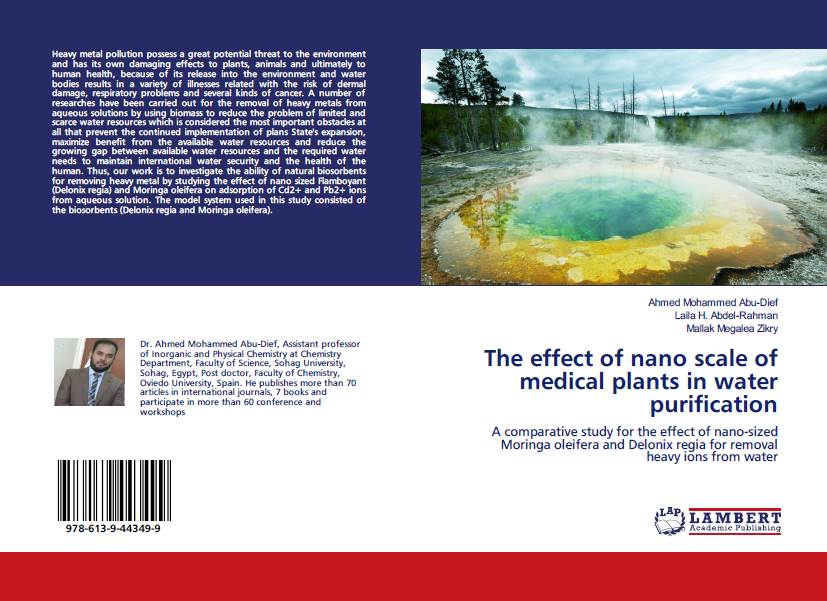The ability of natural biosorbents for removing heavy metal ionswere investigated by studying the effect of nano sized Delonixregia and Moringa oleiferaon adsorption of Cd2+and Pb2+ions from aqueous solution. The investigated biosorbents (Delonixregiaand Moringaoleifera) were characterized by FT-IR, SEM, TEM, XRD and EDS techniques.The influence of pH, temperature, adsorbent dosage, contact time and initial metal ion concentration on adsorption process were investigated. The maximum biosorption capacities(qm)of Cd2+ andPb2+byDelonix regiaand Moringa oleifera were37.23,40.54, 43.62 and37.91 mg/g, respectively. The lowest biosorptionsfor Cd2+and Pb2+ ions were observed at pH 2.0 bythe investigated biosorbents. Thehighest biosorption was observed for Cd2+ ions on Delonixregia and Moringa oleifera at pH 4.0, 5.0,respectively. The highest biosorption for Pb2+ions was observed at pH 5bythe investigated biosorbents. The optimum contact time for the adsorption process was found to be at 60 minutes. The amount of metal ions adsorbed increases with increasing the adsorbent dosage. Moreover, biosorption capacity (qe) and removal efficiency of Cd2+and Pb2+ions solutions increases as temperature increases.
FT-IR data indicated that the adsorption of metal ions occurs on the surface of Delonixregia and Moringa oleiferaas the main functional groups that are responsible for metal ions binding are involved in the process.XRD pattern of the powder indicating the presence of a significant amount of amorphous material due to lignin in the biosorbents.SEM showed the morphological features and the surface morphologyof the powders did not have regular, fixed size and shape.TEM analysis examined the particle size of the majority of particles andwas found to be 18, 30 nm for Delonixregia and Moringaoleifera, respectively.EDS analysis determined the chemical composition of the investigated biosorbnt as aprimary fast test to identify the ability of biomass to adsorb the metal ions on its surface.Furthermore, thermodynamic studies confirmed that the biosorption process was endothermic and the positive value of ΔG° is quite common when an ion-exchange mechanism applies in the biosorption.
The kinetics study of biosorption indicates that the pseudo second-order model provides better correlation of the biosorption data than the pseudo first-order,confirming the chemisorption of metal ions solutions onto Delonixregia andMoringaoleifera.The Freundlich isotherm has a better fit with the experimental data compared to Langmuir isotherm. This study shows that nanosized Delonixregia and Moringaoleifera are considered an effective biosorbent with high surface area from agricultural waste, low cost and environment-friendly which can be used for removal of Cd2+ and Pb2+ ions from waste water are available agricultural biosorbents for the removal of metal ions from aqueous environment.


